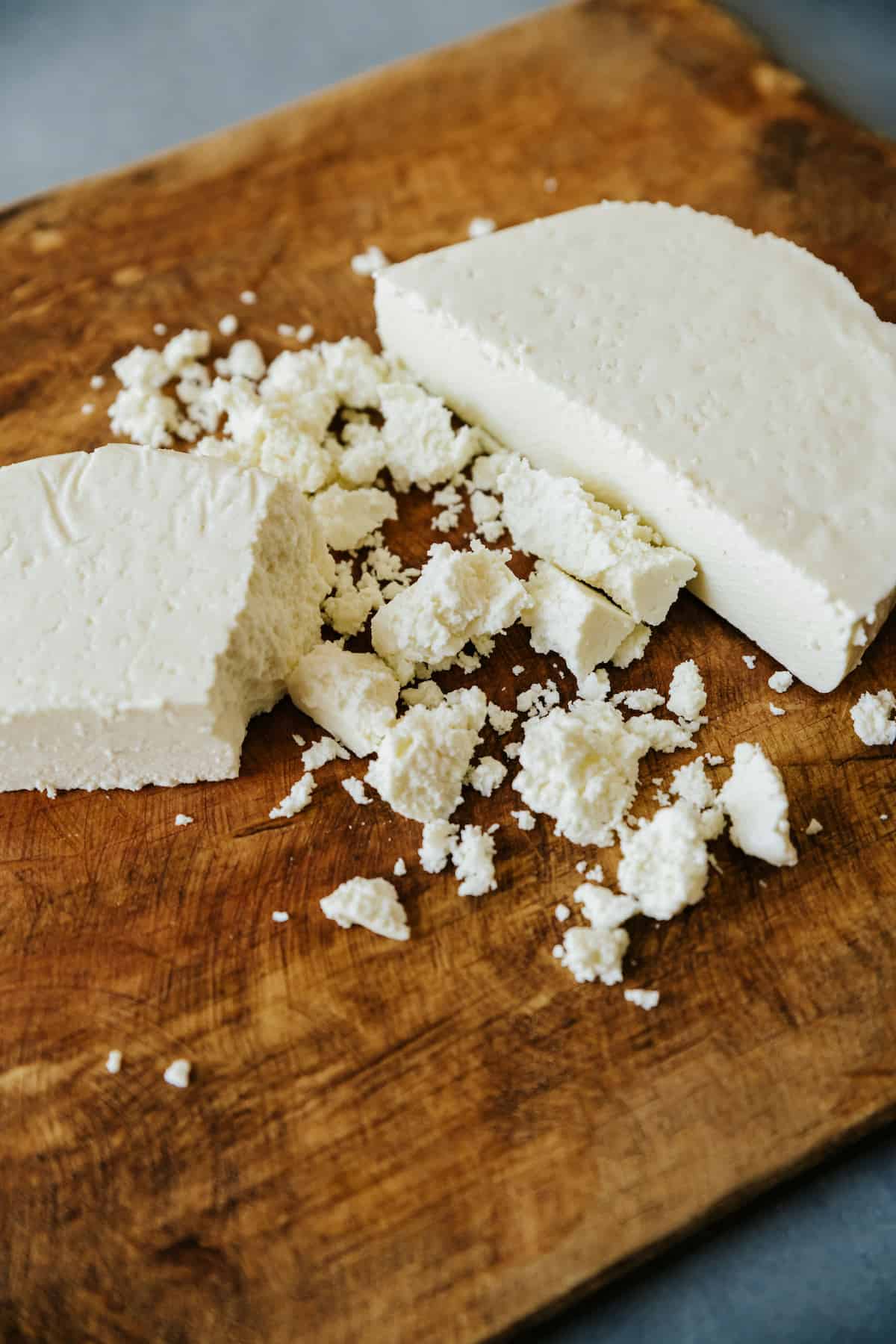Queso Fresco: All About Mexico’s Favorite Fresh Cheese
Milky, crumbly, and mild, Queso Fresco literally translates to “fresh cheese.” Used for topping everything from street tacos and migas to chiles rellenos and flautas, Queso Fresco is a true Mexican treasure. Come along with me on a quick journey to learn all about this yummy kitchen staple!

What Is Queso Fresco?
Queso Fresco, sometimes referred to as Queso Blanco (literally “white cheese”), is a Mexican farmer’s cheese. Traditionally made with a blend of raw cow and goat milk, this fresh, un-aged cheese is super mild with a flavor akin to fresh mozzarella.
Unlike mozzarella, however, queso fresco doesn’t melt. It will get softer when heated, but won’t create a stretchy cheese pull like you might expect from other cheeses (like Queso Oaxaca, for example).
The process of making queso fresco is quite simple: warm milk is curdled with an acid (e.g. lemon juice or vinegar), then the curds are pressed together into a ball. Once made, it is quite easy to crumble into pillowy white mountains, perfect for dusting everything from enchiladas to salads.
If made in the traditional fashion (with raw milk), queso fresco won’t last long in the fridge — it has a tendency to mold or go off much more quickly than harder cheeses. If you buy it at the store, it’ll generally last quite a bit longer both because of pasteurization and commercial packaging. That said, you should still opt to use it within 2 weeks of the “sell by” date for the best flavor.

How To Use This Fresh Mexican Cheese
If feta cheese is to Greece, then queso fresco is to Mexico. In other words, basically every Mexican dish is a good base for using this mild, creamy cheese. In fact, I’d venture to guess that it is the single most-used cheese throughout the entirety of Mexican cuisine! Here are some of my favorite ways to use it:
- As a topping for tacos, tostadas, and salads.
- As a counter to super spicy flavors from hot chiles, like in my spicy cilantro pesto pasta.
- Rolled onto corn for elote.
- As a stuffing in chiles rellenos.
- As a topping on soup.
This tasty white cheese is also great for using in recipes that call for cotija if you’re not much of a cheese person; the flavor is creamy, ever-so-slightly tangy, and deliciously mellow.

Good Substitutes
If you can’t find queso fresco at the store, you have a few options for alternatives:
- Queso Blanco. Although the terms are often used interchangeably, queso blanco can refer to different types of cheese depending on which country you’re in.
- Paneer. Made in a similar fashion to queso fresco, paneer is an Indian white cheese that doesn’t melt.
- Mild Feta. Despite being a bit tangier than the fresh Mexican cheese, feta can be used as a passable substitute.
- Monterey Jack. Jack will melt, which makes it a less than perfect dupe for queso fresco. That said, the mild, milky flavor of jack cheese makes it perfectly acceptable.
- Ricotta Salata. Unlike the creamy, spreadable ricotta cheese you may be familiar with, ricotta salata is quite hard and crumbly and also doesn’t melt. That said, the flavor is quite mild like regular ricotta, making it a nice substitute for queso fresco.
Frequently Asked Questions
While the queso fresco that is sold at most supermarkets has been pasteurized, the CDC recommends that pregnant women avoid eating soft and semi-soft cheeses.
Not really, since it doesn’t melt in the same manner as something like cheddar or mozzarella. However, it will get softer when it is heated and turns a lovely shade of golden when cooked, making it a great topping for dishes like enchiladas.
Typically speaking, queso fresco can be made with either cow’s or goat’s milk, or a combination of the two. Most of the commercially available brands I know of stick to cow’s milk, but be sure to read your labels if you are concerned.
It honestly depends on who you’re talking to! Queso fresco has a mild, milky flavor with just a hint of salty tang. Cotija is sharper in flavor, with a more pronounced saltiness that makes it feel more like parmesan. For more information on queso cotija, check out this post!
Recipes Using Queso Fresco
- Bacon-Wrapped Grilled Peaches With Honey & Queso Fresco
- Cheese & Shrimp Stuffed Chiles Rellenos
- Grilled Vegetable Tacos With Pesto Guacamole
- Chilaquiles Verdes With Roasted Tomatillo Salsa
Did you find this post on Queso Fresco useful? Or do you have any more questions about it? If so, let me know in the comments below!
 Muy Bueno: Fiestas
Muy Bueno: Fiestas 


One Comment on “Queso Fresco: All About Mexico’s Favorite Fresh Cheese”
Your information on queso fresco was helpful regarding the expiration time of the cheese. I prefer queso fresco and cojita over Monterey Jack. The salty test of queso fresco and cojita add a special flavor, especially with the red chili sauce dishes.